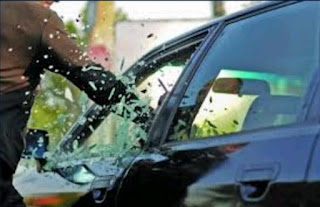What is criminal law according to the amendment?
Firstly indian criminal law are divided into three major acts I.e
Indian penal code 1860 {IPC} ,
Code of Criminal procedure 1973 {CrPc} ,
Indian evidence Act 1872 .
These are the most used major acts in criminal law
There are seven different types of crimes:
Crimes against persons
Crimes against property
Hate crimes
Crimes against morality
White collar crimes
Organized crimes
A sociological looks at crime
Crimes against persons:
An crime against an individual is called as personal crimes ie murder, rape, robbery, assault etc... these are all considered as crimes against persons. A person being harmed by another person is called as crimes against persons.
Relevant case laws:
vishakha and others v the state of rajasthan
In a case which deals with the sexual harassment of a women in workplace. bhanwari devi who was a social worker in rajasthan
She worked under a social development of rural level which was about to stop child marriage in a village and the social program was initiated by the government of rajasthan
Bhanwari devi en-devoured to stop the child marriage of ramkaran gujjar’s daughter, who was merely less than one year which means she was an infant only
social punishments or boycott
On September 1992 she was been gang raped by ram gujjar and his five friends in front of her husband.
After that she was only left with the bloodstained dhoti of her husband to wrap her body, as a result of which they had to spend their whole night in the police station.
The trial court made the discharge of the accused people for not being guilty.
The high court in his judgement propounded that it was a case of gang rape which was conducted out of revengeful situation.
All these statements and judgements, aroused women and NGO’s to file petition
(PIL) in supreme court of india.
JUDGMENT:
The judgment of Vishakha's case was conveyed by Chief Justice J.S Verma as a representative of Justice Sujata Manihar and Justice B.N Kripal on account of writ petition which was file by Vishakha the victim of this case. The court observed that the fundamental rights under Article 14[2], 19[3](1)(g) and 21[4] of Constitution of India that, every profession, trade or occupation should provide safe working environment to the employees. It hampered the right to life and the right to live a dignified life.
The court also suggested to have proper techniques for the implementation of cases where there is sexual harassment at workplace. The main aim/objective of the Supreme Court was to ensure gender equality among people and also to ensure that there should be no discrimination towards women at their workplace.
After this case, the Supreme Court made the term Sexual harassment well defined, accordingly any physical touch or conduct, showing of pornography, any unpleasant taunt or misbehavior, or any sexual desire towards women, sexual favor will come under the ambit of sexual harassment.
Crimes against property:
Crimes against property: Here a person’s property is being harmed. property crimes involve the theft of property without bodily harm to an an individual person but his property is been harmed, such as burglary, vehicle theft etc…
Here a person’s property is being harmed.
property crimes involve the theft of
property without bodily harm to an an
individual person but his property is
been harmed, such as burglary, vehicle theft etc…
Hate crimes:
Hate crimes are crimes against persons or property that are invoking of race, gender, gender identity, religion, disability or ethnicity
Crimes against morality:
Crimes against morality are also called as victimless crimes because there is no complainant or victim in these crimes eg: Prostitution, gambling, illegal drug use are the examples for victimless crimes.
White collar crimes:
White collar crimes is a non-violent in
nature and includes public corruption,
fraud, bribery, mortgage fraud, money
laundering these list keeps on goes up.
In short term white collar crimes are
committed by business and government
officials. This includes emblazing (stealing money from employees). And other infringement of income tax laws
Relevant case law:
Satyam Scandal: biggest-ever corporate accounting fraud. This scam came into light on 7th January, 2009 by way of a confession letter written by B. Ramalingam Raj. The letter confessed to manipulating his books of account by overstating the assets and understating liabilities.
The books of accounts are the reflection of the company’s financial standing.
They act as an important tool on which investors can rely on before investing their money. Accounts books were manipulated to cheat investors and shareholders.
The whole scam cost approximately ₹14,000 crore and is considered to be an important factor which contributed to the recession of 2009.
In this scandal, SEBI hit back strongly, holding Ramalinga Raju and nine major associates and guilty of insider trading, indulging in fraudulent and unfair trade practices. SEBI directed the accused to pay approximately ₹3000 crores within 45 days and also debarred them from accessing the security markets in any way for 14 years. SEBI managed to lash back strongly to ensure such a scam never happened again
Organized crimes:
Organized crimes is committed by the structured groups of typically involving the distribution and sales of illegal goods and services. It is not described as mafia but the term can refer as any group that exercises control over large illegal enterprises such as drug trafficking, gambling, weapons smuggling, or money laundry.
Sociological looks at crime:
In sociological looks of crimes it considers the term of race, gender, class. For instances young urban poor black and brown people are being arrested and convicted more than others for personal and property crimes. To sociologists the question is this reflects actual difference in committing crimes among different groups or whether this reflects differential treatment by the criminal justice system. The answer is both.
Image source:
Criminal law images from
Myonlineshiksha blog (https://blog.myonlineshiksha.com/storage/2021/04/POCSO-Act.jpg)
Pinterest (https://in.pinterest.com/pin/437904763750236882/)
Property crimes image source from
Richardfinklawoffices
Morality crimes image Source from
Wisefamousquotes (https://images.app.goo.gl/nXcK5yiudPkYxphg8)
White collar crimes image source from
Knowlaw.in






No comments:
Post a Comment